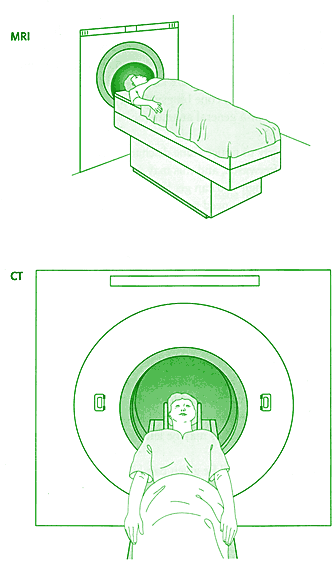|
Imaging investigations: IVU, CT
and MRI
• Radiological investigations can be used to find Out how large
a cancer is and how far it has spread.
• An intravenous urogram (lVU for short) uses dye to show up the
kidneys and ureters, which can then be seen on X-ray. The dye is injected
through a vein in the back of your hand.
• The hospital will give you any special instructions - these may
include not eating or drinking anything for 6 hours before the test,
and possibly using a laxative on the day before the procedure, to help
to clear your bowels.
• With CT (computerized tomography) scans, X-rays of the abdomen
and pelvis are taken in sequence to build up a picture of the whole
area, rather like slices through a loaf of bread.
• You may be asked to have a special drink of 'dye' before your
scan. The scan may also be repeated after you have had some dye injected
into the vein in the back of your hand. This helps to show up blood
vessels on the scan.
• MRI stands for magnetic resonance imaging and uses a magnetic
field to scan the abdomen and build up an image. There are no X-rays
involved in this procedure.
• Having a CT or, particularly, an MRI scan can be claustrophobic
and noisy, but it is not at all painful. The hospital will let you know
if you need to make any particular preparations before your scan.
|
|
 |




